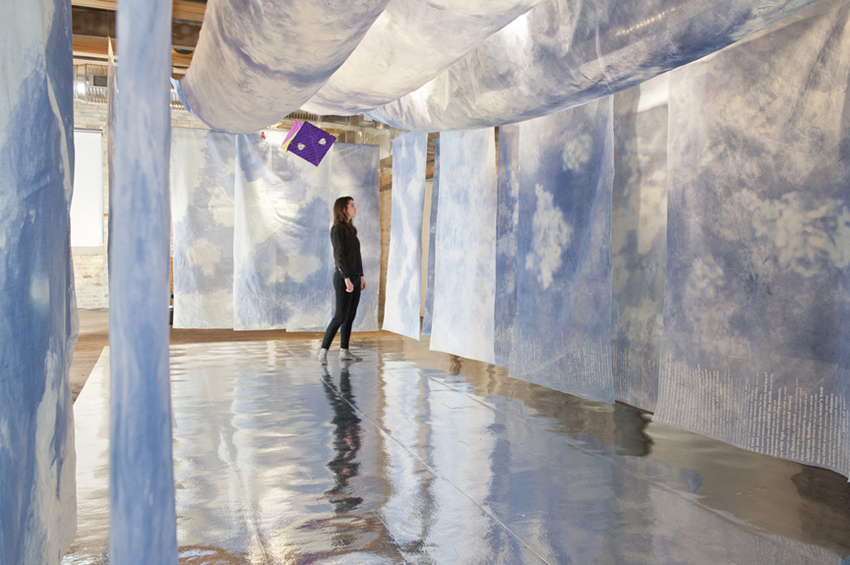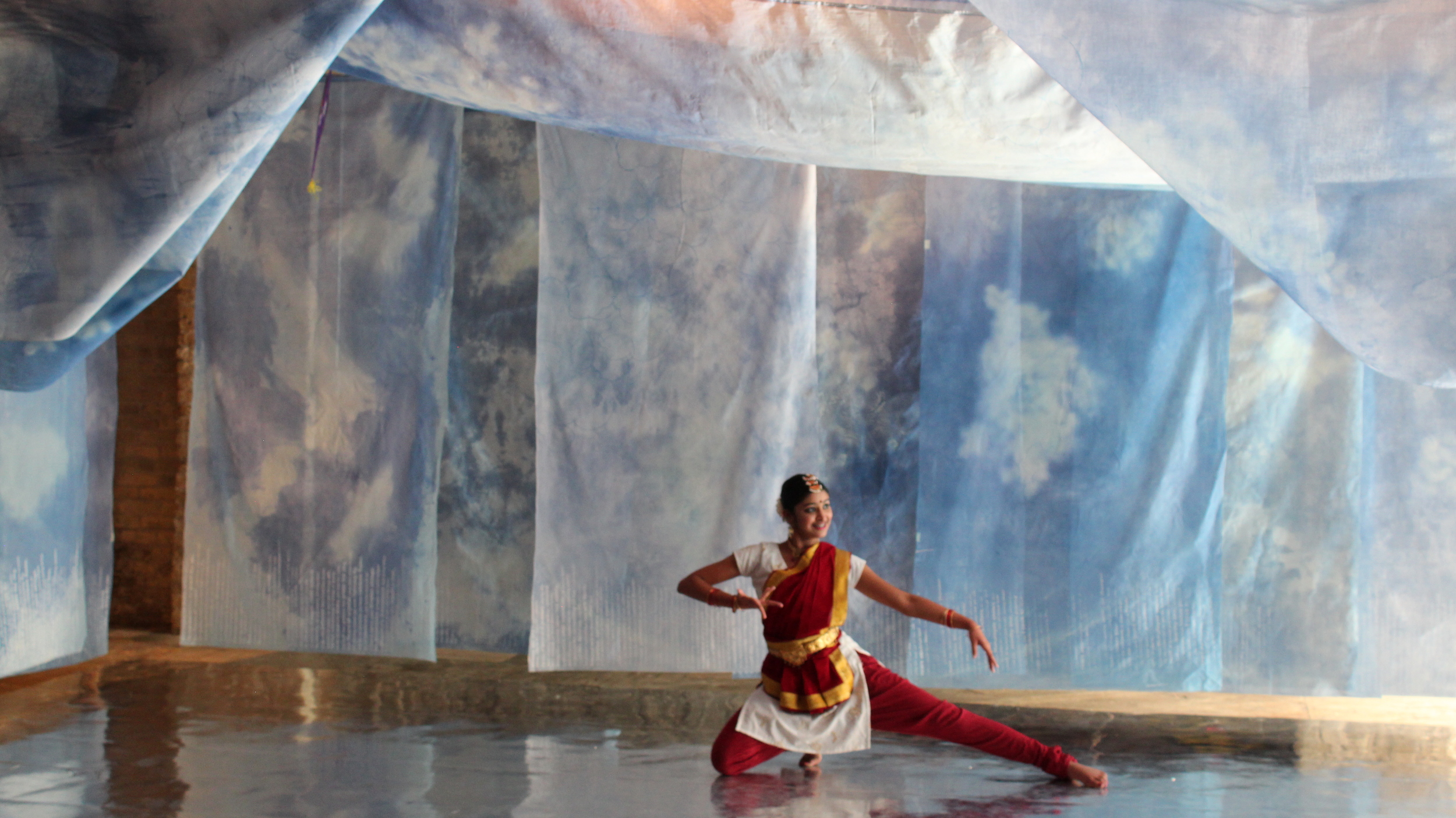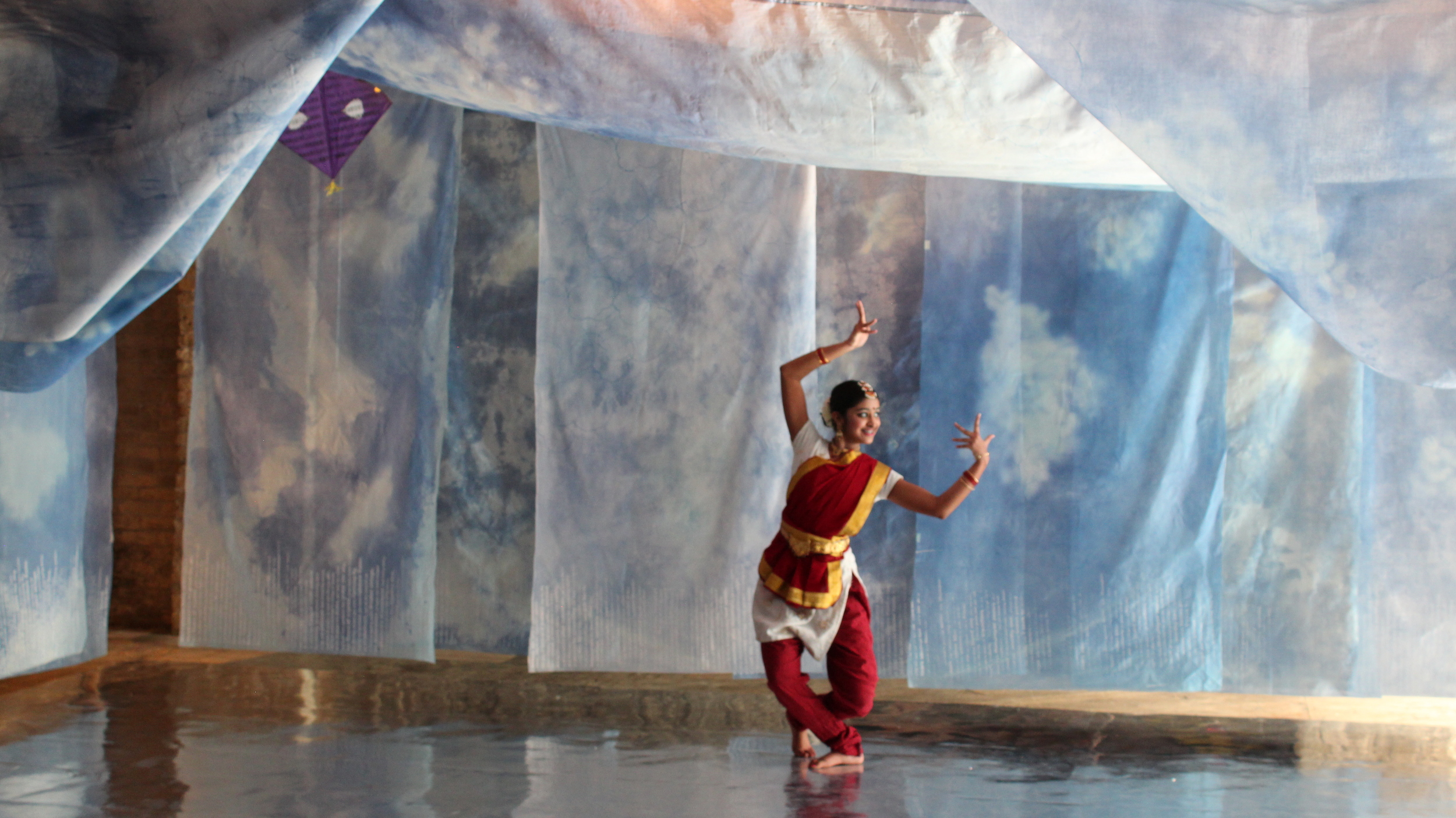


Cloud Palace
Cloud Palace is inspired by “Badal Mahal” a room covered with murals of clouds, thunder and rain in the Junagarh fort, Bikaner, Rajasthan and dates back to the late 1500s. This is a unique space where clouds are depicted as all enveloping in rich blue tones. The other inspiration for “Cloud Palace” is an epic poem titled “Meghdoot” or “cloud messenger” written by a 4th century poet- Kalidasa. Meghdoot is a love poem written for his wife from whom he was separated. This literary work is packed with reference to myth and allusion, longing and romance. Most of all the work draws attention to the human connection to nature and place as the cloud traverses the landscape on its journey to bring the poet’s message to his wife.
Clouds have a very special significance in India. They are much anticipated as the carriers of the monsoon season after a long, dry summer. They bring hope and new growth in dry arid regions of NW India. Gathering dark clouds become metaphors of impending doom and parting clouds become metaphors of hope in mythological stories.
Clouds have long invited and provoked our imagination worldwide. Much like the inkblot test, the associations and narratives we come up with as we gaze up to the sky can be reflective of our subconscious. Cloud analysis is used in studies to predict natural disasters in present day meteorology. And of course cloud computing is used extensively now. Through remote servers, the cloud as a virtual repository of information that we can access at will, releases us from the burden of storing information- much like a kite without a string.